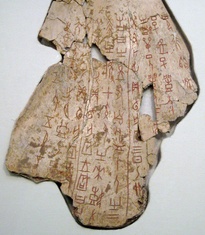
Chinese History 101 #01: Early Kingdoms
Last updated: Saturday July 24th, 2021
Report this blog
- Before we start
- Three Sovereigns and Five Emperors (circa 2852 BC to 2070 BC)
- Xia Dynasty (circa 2070 BC to 1600 BC)
- Shang Dynasty (circa 1600 BC to 1046 BC)
- Western Zhou Dynasty (1045 BC to 771 BC)
- Spring & Autumn Period (771 BC to 476 BC)
- Warring States Period (475 BC to 221 BC)
- The end of the first blog
Before we start
Beside geography, Chinese history is my favourite subject, and historical maps are top of my favourite. It is understandable that most non-Chinese would have little clue about Chinese history beside few stereotypes (the Great Wall, Terracotta Warriors, Silk Road etc.) While I do not attempt to make the readers a master of the subject, I hope that through these blogs readers can gain some appreciation of the Chinese culture, people and their psyche. If you want to learn more, there are plenty of materials online, such as Wikipedia, which I will refer to a lot in these blogs. I will try to pick some major events and interesting stories to make the subject more interesting and enjoyable.
When I say Chinese history, to be more accurate it is referring to the history of Han Chinese. These blogs will be broken down following to the timeline below. So in this first blog, I will explore the history from the prehistoric time up to 221 BC (the green bit).
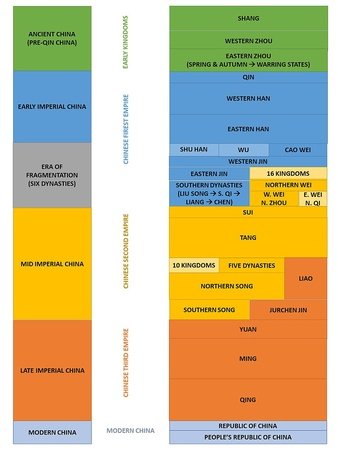
Three Sovereigns and Five Emperors (circa 2852 BC to 2070 BC)
The Chinese like to boast about having 5000 years of history, but in fact, history with reliable contemporaneous records only started around 1600 BC (Shang dynasty). Before that, the history is mythical, or at least unsubstantiated.
Like all other ancient civilisations, the Chinese civilisation started near a major river, the Yellow River.

The first group of mythological rulers are the 3 Sovereigns & 5 Emperors. Of these, the Yellow Emperor and Yan Emperor are regarded as legendary ancestors of the Chinese people, who call themselves the Descendants of Yan and Huang. During this ancient times, the throne was not passed on to the direct descendants, but rather selected by the tribal leads.
Xia Dynasty (circa 2070 BC to 1600 BC)
The first Chinese dynasty started when the throne was passed onto Yu the Great, who was credited for stopping the flood in the Yellow River. When Yu passed the throne to his son instead of the most capable candidate, it set the precedent for dynastic rule.
The Xia dynasty lasted around 400 years until the last king Jie, who was famous for his lavish lifestyle, extreme cruelty and recklessness. He and his concubine Mo Xi ordered a lake filled with wine to be built, and sailed in the lake with an orgy of drunken naked men and women bathing and drinking. Mo Xi then commanded 3000 men to drink the lake dry, only to laugh when they all drowned. In one incident, Jie rode on the back of his chancellor like a horse and executed him when he could no longer crawl.
Shang Dynasty (circa 1600 BC to 1046 BC)
Tang, leader of the Shang tributary state, overthrew King Jie at the Battle of Mingtiao, which was considered the first revolution in Chinese history. Since then, the capital of Shang changed four times until around 1300 BC when the capital was finally settled in Yin (near today Anyang), which was the first stable capital of China. During 600 years of Shang dynasty, major advancements were made in economy (using seashells and metal coins as currency), technology (bronze/pottery/silk making, mathematics and astronomy etc.), cultural (such as oracle bone script) and military. Shang, together with the New Kingdom of Egypt, were the two largest and most advance countries on earth at the time.
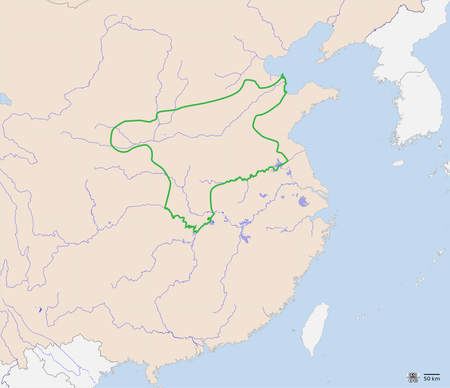
The fall of Shang went similarly to Xia. The final king Di Xin was a ruthless and immoral king bemused by his "wicked" wife Daji, who according to legend was an incarnation of a nine-tail fox. They were famous for constructing the Alcohol Pool and Meat Forest, where roasted meat was hung on trees along a pool of alcohol. Di Xin invited up to 3000 guests at time, with naked men and women playing cat and mouse game at the pool to amuse Daji. The mythical "fox spirit" is nowadays used to describe beautiful woman who is a homewrecker in Chinese.
Di Xin's reign ended when the Zhou army defeated the Shang at the Battle of Muye and the king set the palace on fire with his treasures and committed suicide.
Western Zhou Dynasty (1045 BC to 771 BC)
The early part of Zhou dynasty was historically called Western Zhou, since its capital Haojing (nowadays Xi'an) was located in the west. After King Wu conquered Shang, he distributed land to his relatives and the nobility, and these hereditary fiefs became increasing independent of the king.
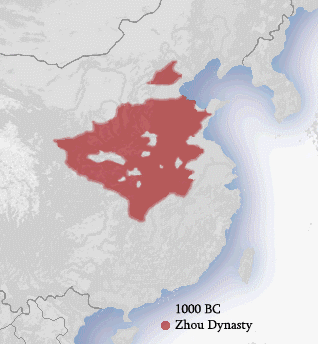
The fall of Western Zhou was again similar to Xia and Shang. The last king You (pronounced "yo" rather than "u") deposed the queen and the crown prince in favour of concubine Bao Si. In the Chinese version of crying wolf, it was said that Bao Si did not laugh easily, and King You tried to amuse her by lighting warning beacons and fooling his nobles into thinking that the nomads were about to attack. The father of the original queen was furious and mounted an attack together with the nomads. No one came for the king's rescue and he was eventually killed. The nobles then set up the original prince as the new king and moved the capital east to Luoyang, because the old capital was severely damaged by the war. This marked the end of Western Zhou and the beginning of Eastern Zhou.
Spring & Autumn Period (771 BC to 476 BC)
The first half of Eastern Zhou was called Spring and Autumn period, named after the Spring and Autumn Annals compiled by Confucius. The Zhou royal court started to lose authority over the various feudal states, which had de facto autonomy and waging wars against each other.
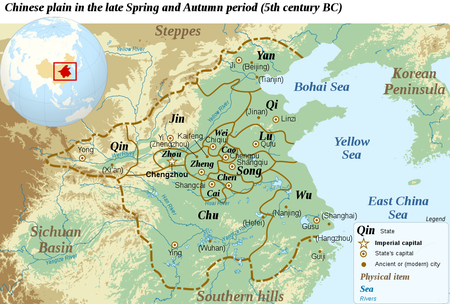
Warring States Period (475 BC to 221 BC)
The Spring and Autumn period evolved to the Warring States period when there were only seven major states left. By the time, the kings of Zhou (the white bit in the middle) were merely figureheads with no control and little respect from the vassal states.
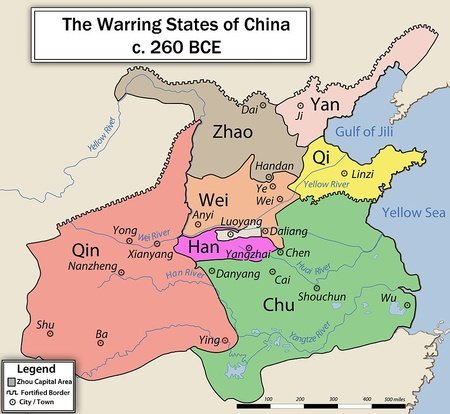
During the Warring States period, the scale of warfare increased massively, with hundred of thousand of casualties in major battles. The worst of all was the Battle of Changping between Qin and Zhao in 260 BC, where 450,000 Zhao men captured by the Qin army were buried alive, leaving 240 youngest soldiers released back to Zhao to spread the terror.
Towards the end of the Warring States, Qin became the strongest and threatened the other six states. In 256 BC, Qin attacked Luoyang and the Zhou king surrendered, ending the Eastern Zhou dynasty. Qin then conquered Han in 230 BC, Zhao in 228 BC, Wei in 225 BC, Chu in 223 BC, Yan in 222 BC, and finally Qi in 221 BC and unified China.
The bloodshed and misery of the Warring States period goes a long way in explaining China's traditional and current preference for a united country, such as that depicted in the 2002 movie Hero, a made-up story based on the failed assassination of the king of Qin in 227 BC. In the movie, the assassin gave up because he wanted to see an unified China and an end to all wars. It is often said that if Qin did not unify China, albeit brutally, China would be fragmented like Europe, with many small states each with their own languages and cultures, and waging wars against each other all the time.
The end of the first blog
This comes to the end of the first blog in this series. In the next one I will start from the king of Qin unifying China and thus became the first emperor, to the start of Sui dynasty when once again China was unified after hundred years of war and separation (i.e. the blue bit on the first chart).
And remember, history was always written by the victors with their own agendas. Sometimes it was exaggerated, sometimes misleading, and sometimes totally false and fabricated, but it is always fascinating.

I was once in a conference with many young Chinese professionals and the speaker asked the audience if anyone could name all the dynasties in history. They all giggled while I sat shyly at the back not putting up my hand.
Also, I thought Jie died of illness after being exiled to Nanchao